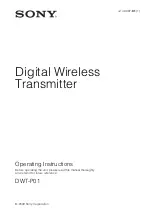
Glocom GX-9 (FB250 Class) Operating Manual
41
G
G
G
G
LOSSARY
LOSSARY
LOSSARY
LOSSARY
APN: An Access Point Name (APN) provides access to an external network. By default, the SIM Card in
your terminal is configured with the APN of your Service Provider. You may want to configure further
APN’s if you have arranged with your Service Provider to use more than one SIM Card.
BGAN Satellite Terminal: Referenced throughout this document as the Satellite Terminal, “The
Terminal,” or UT. This device implements and manages BGAN satellite communications between
your computer and Service Provider’s network.
Quality of Service: Quality of Service (QoS) assigns a level of priority to certain types of data traffic, in
particular high bandwidth applications such as video and multimedia. QoS attempts to maintain a
guaranteed throughput level, and minimize error rates and end to end latency, so providing a higher
level of service than "best effort" protocols.
DNS Server: The Domain Name System (DNS) is an Internet service that is required because the
Internet does not recognize the text-based Web address or email address that you type into your
Web browser or email application. All or part of a Web address or an email address is a domain
name, and DNS translates this domain name into an IP address that is recognized by the Internet.
A DNS Server holds a database of domain names and IP addresses, so that when you enter a Web
address or email address, you are directed to the correct IP address over the Internet.
Dynamic DNS Server: If you are using dynamic IP addressing, Inmarsat recommends that you use a
dynamic DNS server. A dynamic DNS server updates the IP address information in the DNS
database each time your IP address changes. A dynamic DNS server also enables a computer
using a dynamic IP address to use network applications that normally require a static IP address,
for example FTP servers. This service requires subscription with a Dynamic DNS provider.
Static DNS Server: If you are using static IP addressing, Inmarsat recommends that you use a static
DNS server. If you select this option, you must enter the IP address of the Primary DNS Server.
This is supplied by your Internet Service Provider. Optionally, you can enter the IP address of a
Secondary DNS Server, also supplied by your ISP. This is used in the event of failure of the
Primary DNS Server.
Error correction: Error correction ensures that very little data is lost during transfer by asking for dropped
packets to be resent. However, because it holds subsequent data whilst the packet is being resent,
you may notice some jitter or delay in the received data. This is normal for most data types.
For real-time applications, such as Voice over IP (VoIP) or video, it is recommended that you remove
error correction. Removing error correction minimizes delay and jitter..
Ethernet: Ethernet is a local area networking method used widely throughout the computer industry. It is
one of the three communications interfaces supported by the Satellite Terminal.
Fault Code: A number which uniquely references an error in a hardware or software system. In the
Satellite Terminal, if there is a fault detected, the fault code and a description are displayed in suitable
LaunchPad windows.
GPS: Global Positioning System. The GPS receiver in the Satellite Terminal receives signals from the
constellation of GPS satellites. It uses these signals to determine the Terminal’s location on earth.
That location is used during registration to gain access to the BGAN system.
Header Compression: A header is the component of a data packet that precedes the data that you are
sending. The header contains information such as source and destination address, error checking
and other administrative details. In most data types this does not noticeably affect the data
transmission rates. However in multimedia applications such as voice and video, the header can
significantly affect performance.
Inmarsat recommends that you switch on header compression for multimedia applications, such as
video.



































